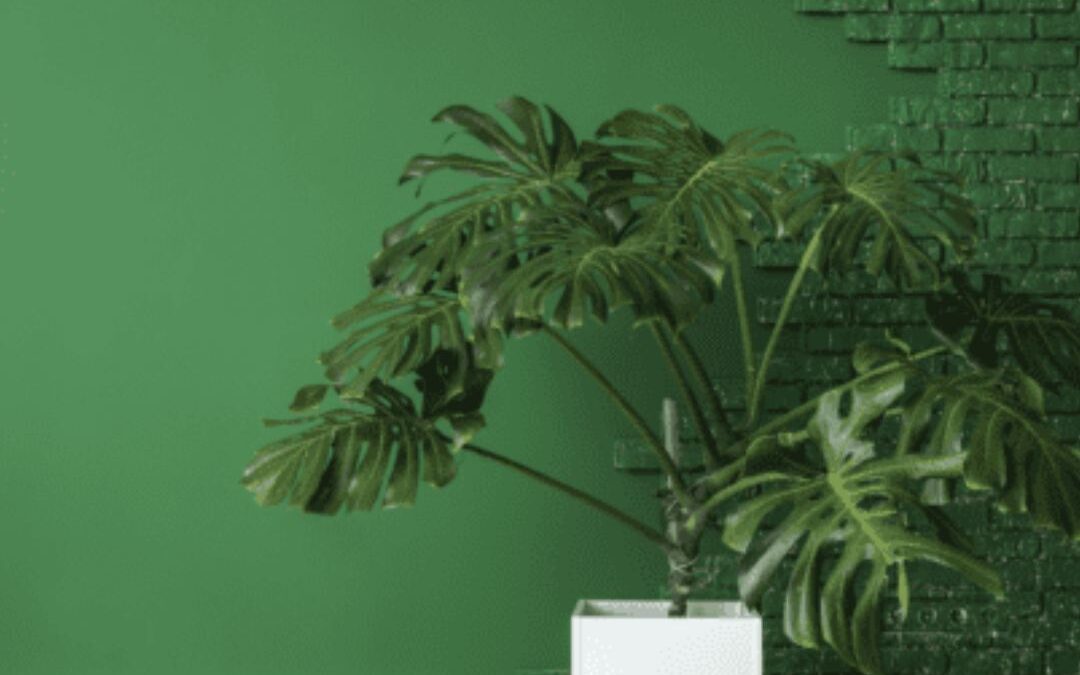Let’s talk about plants with big leaves.
The cover of June, 2022 Real Simple Magazine had a vase with big green leaves in it.
When I saw it, I thought “YES! That is REAL SIMPLE!!!”
Big bold foliage is all the rage, and If you want to get in on this lush and dramatic look, it couldn’t be easier. In this post, I’m sharing some simple tips to get you started.
Or forget grow . . . and go faux!
There are many ways you can have beautiful ornamental displays all year long.
Check out the look on the Real Simple magazine cover below. Even the print hanging on the wall features big, bold leaves. And the big leaf in the blue vase is from a Monstera plant. (Or is it? Keep reading to find out).

There are 48 varieties of Monstera. But at your local nursery or online retailer, you won’t have nearly that many options.
In this post about plants with big leaves, we’ll focus on . . . big leaf Monsteras.
The one you’ll probably see most often is the Monstera Deliciosa, also known as the Swiss cheese plant.
- It is easy to understand where the name “Monstera” came from, given the “monstrous” size of the plants leaves,
- The perforation on the leaves give you the “Swiss cheese” moniker,
- And the “Deliciosa” comes from its sweet edible fruit.
Now, I have seen many of these big-leafed plants, but I have yet to set eyes on its fruit!
While not a true philodendron, the Monstera Deliciosa plant may be called a split-leaf philodendron when you head out to get it. Don’t overthink it. If you like it, buy it.
Where can I buy a Monstera Deliciosa plant?
You can grab this big-leafed Monstera Deliciosa plant at your local nursery, Home Depot or even online.
How do I keep my plants with big leaves alive?
Monstera Deliciosa likes it warm. So if you live in a tropical or subtropical climate you can plant it outside – just make sure to give it room or something to climb on.
Don’t give Monstera too much sun. It prefers cool sun or light shade.
If you’re not in a climate where you can grow the plant outdoors, don’t give up! Monstera make an excellent house plants with big leaves.
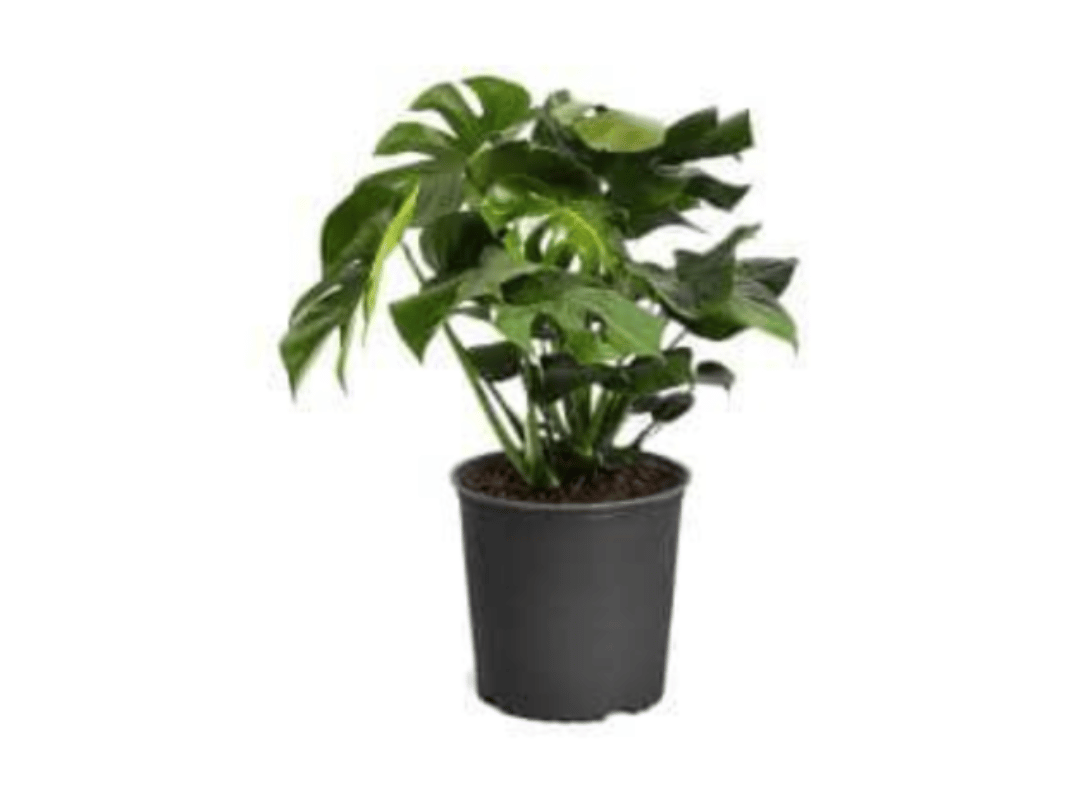
Don’t have a green thumb? Travel too much? DONT’ FRET!
There are faux Monstera in various forms. Try grabbing a fake Swiss Cheese plant at Ikea , Pottery Barn or West Elm.
Not into committing to an entire plant? Get the look with a few faux and bold leaves! Check them out at West Elm, CB2 or Ikea.
Don’t be afraid to cut the leaf down! You want to keep it proportional to the vase. And the CB2 Monstera leaf is almost 3 ½ feet tall. They aren’t messing around.
The rule of thumb is that you want the vase to be about 1/3 of the display. Which means I’m not a big fan of how these online retailers displayed their big leaves.
And, you’ll usually want to use an odd number of leaves. In the photos below, don’t you think the single leaf and three-leaf arrangements just look nicer, more relaxed than the two-leaf arrangement on the right?
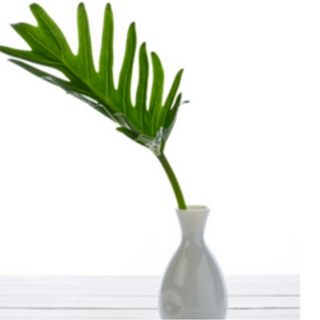
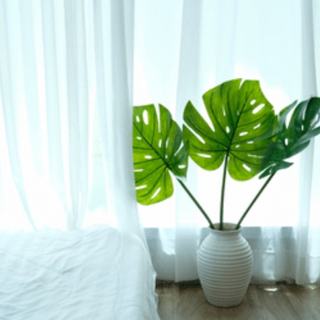
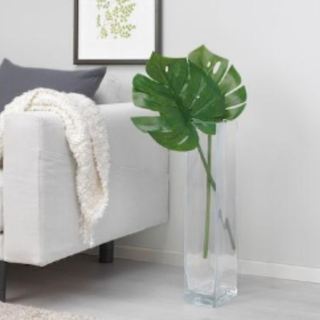
Philodendron is another tropical plant that can have big leaves.
In general, philodendron are easy to maintain and excellent houseplants in case you live in a climate that’s too cold.
There are over 450 philodendron varieties, but we can narrow down our search by looking at what is widely available, non-climbing, and by making sure it’s a plant with big leaves.
Another must is that the leaves are hardy enough to cut and put in a vase.
Philodendron selloum fits the bill! It’s a plant with really big, dark green split leaves. We’re talking shiny, deeply lobed leaves that can get up to 3 feet long.
You can grab one online at Terrain, give it some room and indirect light, and watch it shine.
This philodendron actually likes less light than the Monstera. And, of course, don’t forget water!
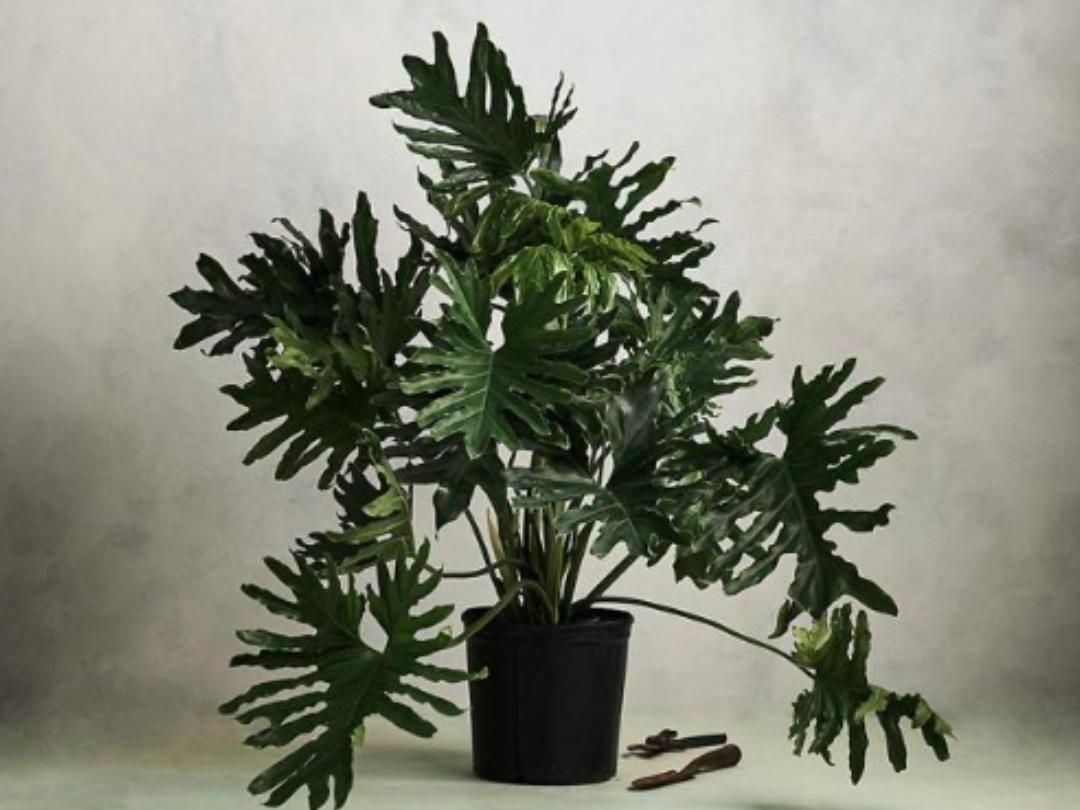
How lush and tropical is that plant?!
It’s a biggy though, so if it’s indoors and you’re short on space, perhaps you should opt for something that doesn’t get 5’ wide and isn’t referred to as a Tree Philodendron!
Or, of course, you can go faux. You can go big faux and get a plant–or just get the fake leaves you need for your vase.
Ready to go for it?? Your purchasing options are . . .
To purchase your plastic Philodendron Selloum you can try Ikea. Or Walmart, which has both the Philodendron and the Monstera.
WAIT – that wasn’t a Monstera, after all!
Seeing the Monstera and Philodendron side by side helps to tell them apart (take a look at the photos below).
And, makes me realize, the plant on the Real Simple magazine cover is the Philodendron not the Monstera!!
And has me thinking that I prefer the crazy Philodendron over the Monstera. But you won’t go wrong with either one! .
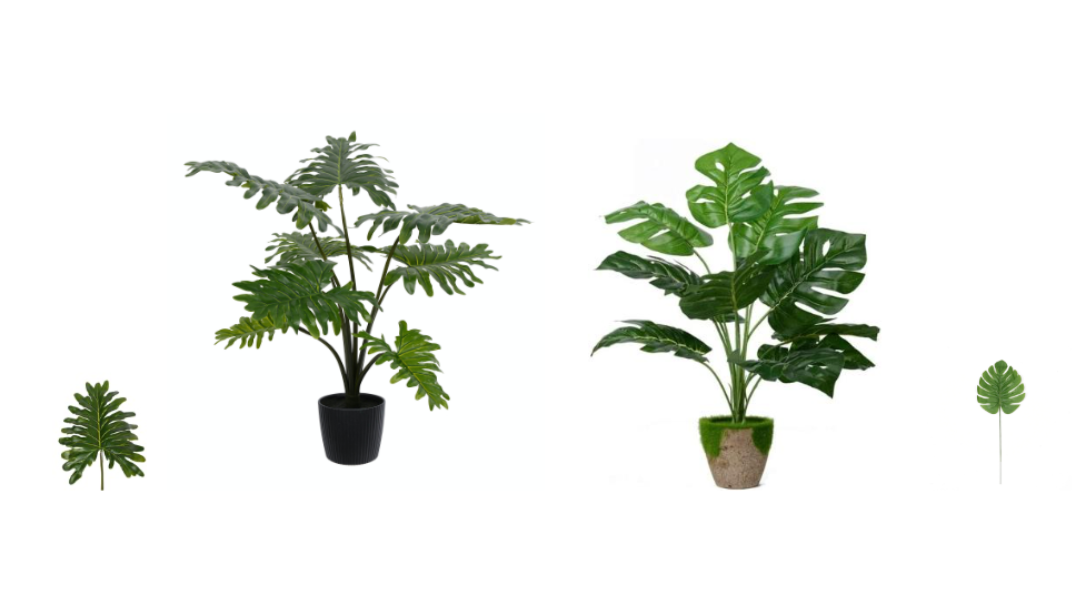
Help! There’s something wrong with my big-leafed plant.
Ok, you’ve landed your luscious plant with big leaves, and things aren’t going as planned. You’re thinking, “They said it would be easy!”
Let’s do some trouble shooting:
Are the big leaves getting yellow?
You may want to add more indirect light to the situation. If you’re thinking no, there’s the perfect amount of bright indirect light, then it may be root rot.
Are the leaves wilting?
Usually that’s a clear sign of a thirsty plant. Is the soil too dry? While you want the top half of the soil to dry out between watering you don’t want the roots to dry out. Usually this means watering at least once every two weeks. But, it can also be root rot. So, if they are yellow and wilting, it may be root rot.
Are the leaves getting brown?
The soil may be getting too dry between watering. Or it’s a sign of root rot. So, if the leaves are getting yellow or getting brown and/or wilting, again – it may be root rot.
What the heck is root rot?
Root rot is a drainage and or watering problem that has rotted the roots of your plant. Don’t feel guilty, it’s a common problem with potted plants. To keep this from happening, or to remedy the problem, check if water is draining through the pot. Does your pot have holes in the bottom to drain excess water?
You’ll also need to question your watering routine. Is the soil moist on the top part of the pot?
Go ahead and put your finger in that soil. You want the soil to dry out on the top ½ of the pot before you water again.
If the condition is bad, you’ll need to repot.
Umm, one more thing about these two plants with big leaves . . .
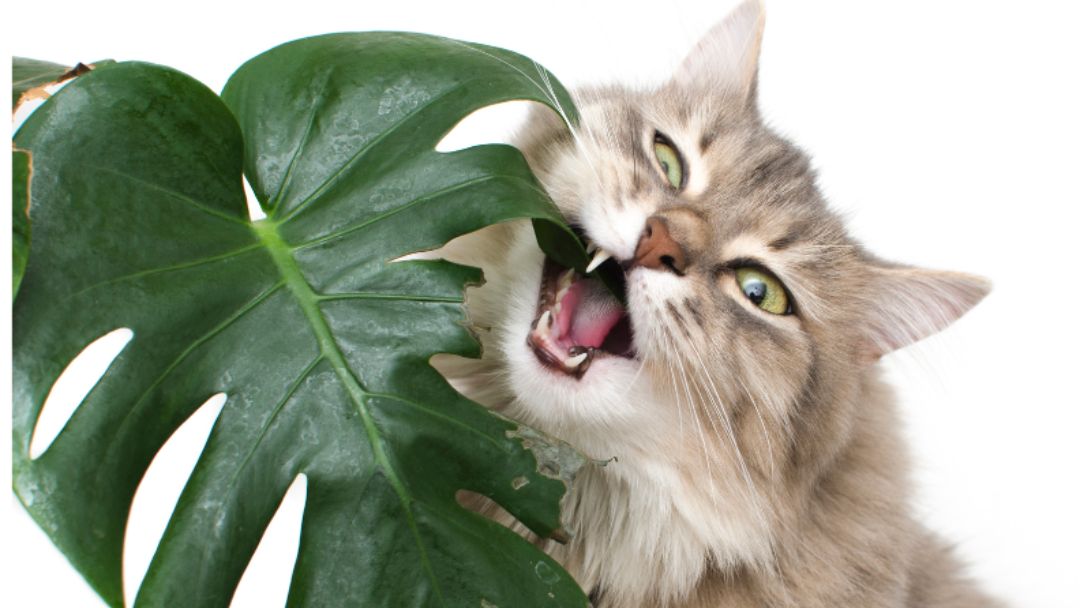
Here’s something else to keep in mind. Aside from the fact that they are both plants with big leaves, Monstera and Philodendron are both toxic to pets.
Before you freak out, let’s talk about what that means.
For the philodendron (and I think it’s true for all philodendron), it means that if your cat or dog eats it, it will burn the animal’s mouth and cause excess salivation and trouble swallowing.
This is because the plants contain calcium oxalate crystals. This seems to be true for Monstera as well.
While these two plants with big leaves may irritate your pet if ingested, and even cause vomiting, it shouldn’t kill your pet.
Sadly, things get complicated when you love your houseplants and are a pet owner.
There are many house plants that contain large enough concentrations of calcium oxalate crystals to be irritants to pets and people . . . if they were inclined to eat their houseplants.
But what about the “Deliciosa” part of the Monstera Deliciosa name? That seems like a poor plant-naming decision!!
Well, while most parts of the plant are considered toxic (e.g., the leaves, stems, roots and flowers), the exception is the fully ripened Monstera Deliciosa fruit.
Ohhhh, we could go on, but we’d rather be in the garden!

